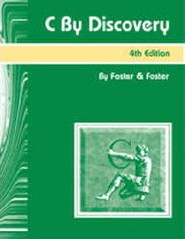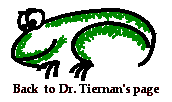 Read your textbook and bring it to class!
Read your textbook and bring it to class!

There is much material about how to turn in lab assignments in this class, how to use omega, tips on writing functions, and bits of info about challenging things in C. ** USE IT.** Other material posted here includes old test materials and links outside UTA to related and useful sites. There are also links to UTA and other sites with information on the vi editor, the pico editor, on Unix systems, and OIT information.
Those lectures that have been captured to the web are linked on the lecture capture page.
 Read your textbook and bring it to class!
Read your textbook and bring it to class!
Completed:
 Lab #4 Assignment for Fall 2010 as
web page
and as
MS Word doc
Lab #4 Assignment for Fall 2010 as
web page
and as
MS Word doc
Please report any errors or typos in assignment to Dr. T by e-mail ASAP.
Lab #4 Design Document must be submitted on time in order for
Lab #4 assignment to be graded.
Contact Dr. T in case of problems.
See lab assignment for extra credit early deadlines.
Submit Design Document and Lab to assigned TA (see info in the table below)
See lab submission instructions below
Misc. Handy C++ stuff for this lab:
A) Dr. T continues to incorrectly say and write gpp for the compiler name - it is g++ .
B) In your file containing main make sure you #include the iostream file and that you have the line
using namespace std;
after the #includes to make C++ work well.
C) For purposes of Lab #4 you can continue to use C strings and string functions. Just make sure you include the correct library files for those functions.
D) To use an input file with C++ takes the following steps:
1) at the top use #include < fstream.h > or just fstream without .h
2) declare an input file stream object, connect it to a physical file, and open the file by a declaration like the following:
ifstream infile("lab4data.dat");
where ifstream is the input file stream class type, infile is the object, i.e. variable, name, and "lab4data.dat" is the name of a file that you want to use for the input file. Notice that this declaration does the equivalent of both declaring a FILE * variable and doing an fopen command in C. Now you should be able to use the infile object anywhere that you would use the cin object. You may choose your own object variable name. You should use the same input file as for Lab #3.
E) To check for the end of a file in C++ you test infile.eof(). This returns true if the file is at the end. Note that infile is the file stream object referred to in part D) above.
Lab #3 Assignment for Fall 2010 as
web page
Lab #2 Assignment for Fall 2010 as
web page
Lab #1 C Assignment for Fall 2010 as
web page
Pre-Lab C Assignment for Fall 2010 as
web page
|
CSE1320 Syllabus
CSE1320 Syllabus Word doc Posted 25 Aug 2010
|
CSE 1320 Schedule
CSE 1320 Schedule Excel file Posted August 25 2010
|
Ethics statement
If you did not sign this in class, then print it on one page, sign, and bring to the next class |









 If you have trouble reading something on this website or
If you have trouble reading something on this website or
Section:
Section 001 - Dr. Tiernan
CSE Help Desk
TA:
Kajal Imon
Various including class TA
For questions, e-mail:
skkajal.imon@mavs.uta.edu
N/A
For lab submissions,send to:
skkajal.imon@mavs.uta.edu
N/A
Office Hours:
Mon. and Wed. 4 - 5 pm
Mon 1pm - 6pm;
Tues 1 - 6pm;
Wed 10am - 1pm;
Thurs 2 - 6pm;
Fri 1 - 6pm;
Sat 1 - 4pm;
Location:
NH 239
NH 124
Software Engineering Slide Presentation
Intro to omega
This has hints about control structures, variable types, arrays, structs, pointers, linked lists, recursion and DEBUGGING!
2nd Example Quiz with solutions
Sample Test Questions with Comments
Below is a link to the review sheets and tests that were given for previous C classes. Similar reviews will be posted for this semester.
Tests, test reviews, and old lab assignments for previous C 1320 classes taught by Dr. Tiernan
These links go to various resources for Unix, the vi editor, and the emacs editor. There is also a link to the main OIT web page for questions about UTA's systems.
vi Unix editor reference from UTA OIT
vi
Unix editor reference: University of Washington
vi
Unix editor tutorial: University of Hawaii
emacs
Unix editor reference manuals: GNU organization
pico Unix editor reference from the University of Michigan
pico Unix editor reference from the University of Chicago
OIT - Office of Information Technology website which has other helpful links
 Reference material for Lab Assignments
Reference material for Lab Assignments

 How to submit your 1320 Lab - including script file info
How to submit your 1320 Lab - including script file info
Updated Sept. 2010
Lab Assignment Submission Information for Dr. Tiernan's section of CSE 1320
Miscellaneous Coding Tidbits
To get input from data files:
Include stdio.h as a header file, declare a FILE * variable, use fopen to connect the FILE * variable to your physical file. See references further below for C file I/O examples.
To deal with reading strings correctly from files:
When reading a string after reading a number from a file, you may need to read a junk character out between reading the number and the string. Use the getc(file_pointer) command to read one character from a file. If one doesn't work try using two getc commands.
To compile multiple physical files into a single program:
To compile two files (Ex: L41.c and L42.c) together into a single
program, use the gcc command with both file names following. Example:
myomega>gcc L41.c L42.c
To get time and date information for your program using C functions:
Information and an example using localtime(), time(), and the struct tm are available at
www.cplusplus.com/ref/ctime/localtime.html
Click on the various links to see the struct definition and other examples
 Coding and Other Tips for Lab Assignments in CSE1320
Coding and Other Tips for Lab Assignments in CSE1320
Reference from Boston University CS class
C File I/O
Use section "2. C FIle I/O". Ignore section "1. Redirection".
File I/O, fopen and fclose
Clearly written with examples
Links to information about using 'getline' instead of 'gets':
GNU C Manual - Line-Oriented Input
GNU C Programming Tutorial - getline
 CSE1320 Powerpoint presentations
CSE1320 Powerpoint presentations

The above link is for a Powerpoint presentation on Software Engineering that will be presented at the beginning of the semester.
 Beginner's guide to writing a C function
Beginner's guide to writing a C function
Covers how to connect to omega, a few Unix commands, a short list of editors and compilers and an example of using the GDB debugger which is available for gcc.
A Powerpoint presentation by Do Kim (CSE senior) edited by Dr. T.
Posted 31 August 2004
Sticky Bits in C online presentation
Sticky Bits in C to download
A Powerpoint presentation by Dr. T.
Posted 19 April 2004


 "how-to" Unix reference manual from UTA OIT
"how-to" Unix reference manual from UTA OIT
- be sure to scroll down to the bottom of the OIT page if no Unix guide
info is visible to the right of the menu bar
- be sure to scroll down to the bottom of the OIT page if no vi editor
info is visible to the right of the menu bar